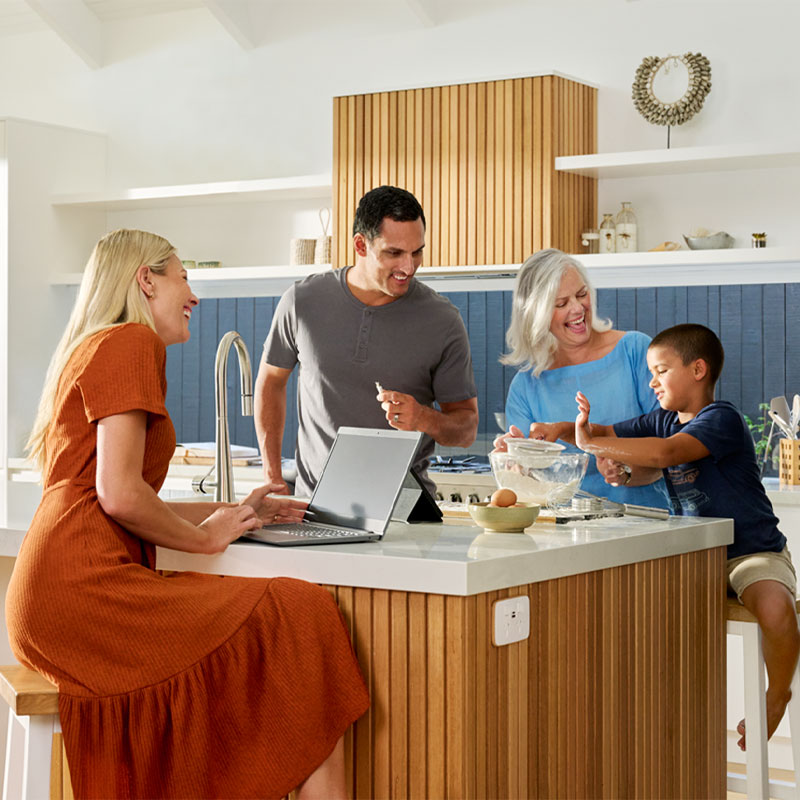Separating fact from fiction in home automation
We’ve debunked some common smart home myths so that you can better understand home automation and make the right choice for you.

Myth 1
Home automation is only for newer homes
There’s no home too old. Our smart home systems can be retrofitted to the home you live in, regardless of the age of the building – all you need is electricity.
If you’re unsure, chat to your electrician. They can explain which solutions would work seamlessly with your space and your lifestyle.
Once you’ve identified the home automation solution that’s right for you, they can get started on installing it. After that, you’ll be a home automation convert and tell all your friends.

Myth 2
Smart homes are too technical to understand
When you hear “home automation” or “smart home”, you might imagine the TV turning on by itself and you not being able to turn it off. Or you might picture complex panels of circuits, wires and buttons.
But that’s not the case at all!
Home automation is designed to make your life easier, not harder. That’s why we’ve designed the Clipsal smart home systems. They’re easy to navigate and integrate seamlessly into everyday living.
Often it’s as simple as setting up schedules using our Wiser Room app on your device. Once set up, the programmed schedules work every day by themselves and do all the thinking for you.
If you can use an app, you can use home automation.

Home automation uses more energy
Incorrect! Home automated electrical solutions are designed to consume less power and save energy. They also allow you to monitor overall power usage.
For example:
On average, you might have air-conditioning on for 6-7 hours per day.
You could reduce the power usage by setting a timer that follows a running schedule (on for 2 hours, off for half an hour, etc).
You keep the house cool, by this simple automation. You don't have to keep your air conditioning on and waste energy.
By using home automation functions like setting timers and creating schedules, you’ll find you’re actually conserving energy.

Join our mailing list
Sign up to our monthly newsletter, packed with inspiration and advice from local building and renovation experts.
_1.jpg.aspx?width=800&height=800&ext=.jpg&ext=.jpg)
Discover Electric Home Design
Building or renovating? Discover how to create a smart, stylish, safe and sustainable home that sets you up for life.

Real home inspiration
See how others brought their dream homes to life with Electric Home Design.

Reimagine living with Clipsal Wiser
Wiser offers peace of mind, energy-efficiency, comfort and control at your fingertips. Discover all the benefits that a Wiser Smart Home has to offer.



